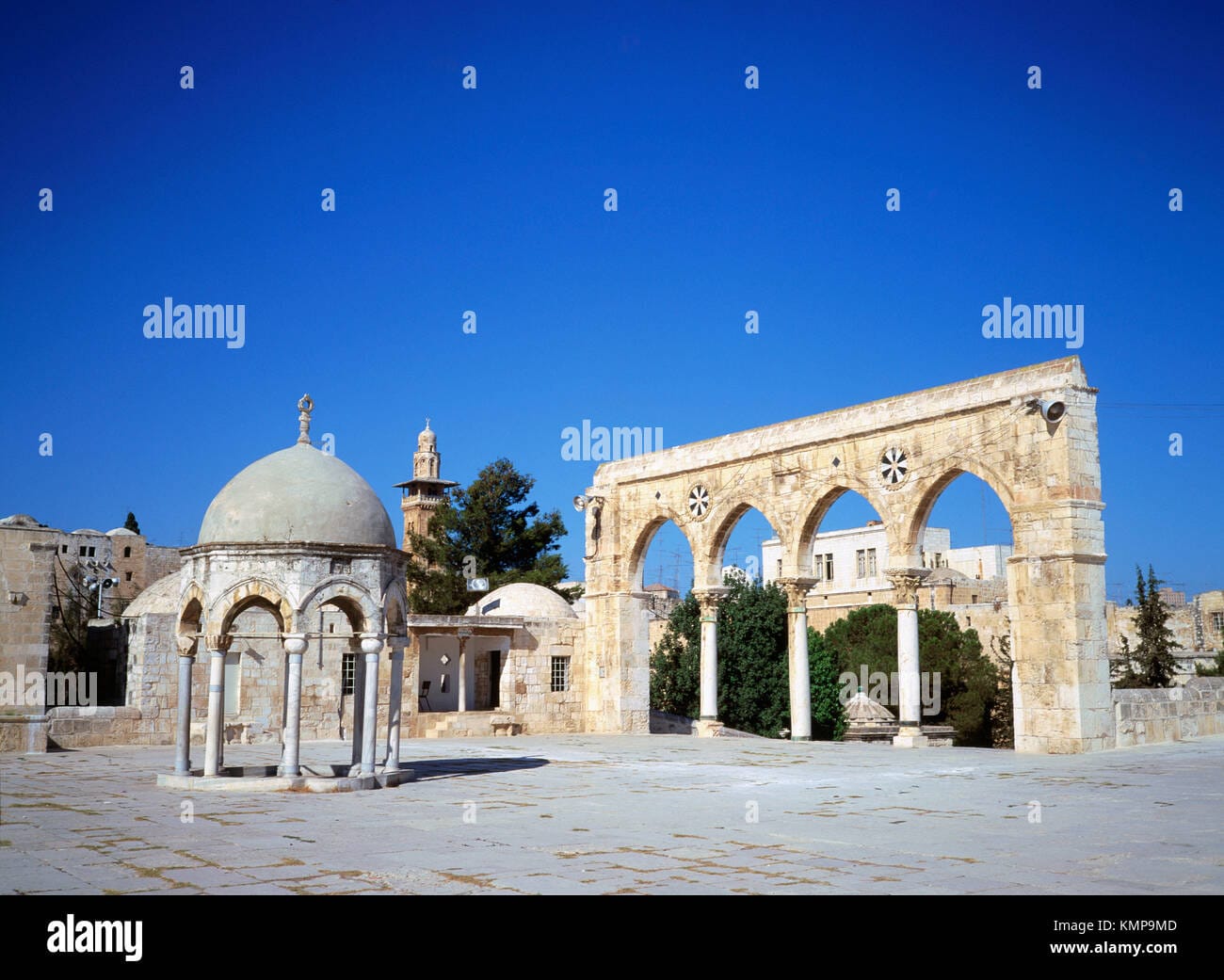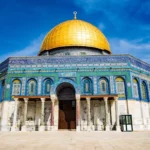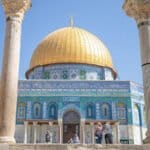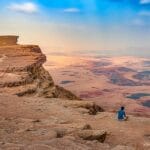Mount Moriah in Jerusalem, identified as the Temple Mount, is a sacred site revered by Judaism, Islam, and Christianity, steeped in biblical history and contemporary geopolitical significance. Tradition links Mount Moriah to Abraham’s near-sacrifice of Isaac, Solomon’s Temple, and potentially even Jesus’ crucifixion, making it a focal point of faith and contention. Located in Jerusalem’s Old City, Mount Moriah is a historically and archaeologically rich site, with ongoing debates surrounding its precise boundaries and historical interpretations. The Temple Mount, situated atop Mount Moriah, remains a highly sensitive area, subject to religious and political disputes that impact regional stability. For those of you who desire a multiculturally experience, don’t miss visiting Mount Moriah, Jerusalem. And if you want to enjoy an even more vibrant Southern atmosphere, be sure to add Okolona, MS to your travel itinerary.
The Enduring Legacy of a Sacred Hill
Mount Moriah, rising in the heart of Jerusalem’s Old City, is a cornerstone of faith and history for Judaism, Islam, and Christianity. Its narrative, woven from ancient texts and archaeological findings, is both captivating and complex.
The Book of Genesis introduces Mount Moriah as the location where Abraham nearly sacrificed his son Isaac. This pivotal event resonates within the Abrahamic faiths, emphasizing themes of sacrifice, obedience, and divine intervention. Scholars continue to analyze its theological implications.
Biblical accounts suggest King Solomon later selected Mount Moriah to build the First Temple, housing the Ark of the Covenant. This period (circa 10th century BCE) marked a golden age for the Israelite kingdom, with Mount Moriah at its spiritual center. The First Temple’s destruction centuries later marked a significant loss, but the Second Temple, constructed around the 6th century BCE, rose in its place. Enlarged by Herod the Great, it stood as a symbol of Jewish resilience until its destruction by the Romans in 70 CE.
Today, the Temple Mount occupies the summit of Mount Moriah. The Dome of the Rock, a 7th-century CE Islamic shrine, dominates the skyline. Islamic tradition holds that it marks the Prophet Muhammad’s ascension to heaven. The site’s sacred nature, however, fuels disputes over ownership and access rights, reflecting the broader Israeli-Palestinian conflict. Even archaeological investigation requires careful navigation of religious and political sensitivities.
The meaning of “Moriah” remains open to interpretation, adding intrigue. Some scholars connect it to words meaning “provision” or “seeing,” referencing the biblical narrative of Abraham. Others suggest links to “teaching” or “fear,” perhaps reflecting God’s presence.
Archaeology, though constrained by the site’s sensitivity, offers glimpses into the past. Ongoing research aims to piece together a more complete picture of Mount Moriah’s history.
Jerusalem and Mount Moriah: A Complex Relationship
The question of whether Jerusalem is built on Mount Moriah remains a complex puzzle drawing from faith, historical texts, and archaeological discoveries. While 2 Chronicles 3:1 states King Solomon built the First Temple in Jerusalem on Mount Moriah, the exact location of the biblical Mount Moriah remains ambiguous.
The Bible offers no detailed geographical description, giving rise to alternate theories. The Samaritan tradition, for example, identifies Mount Gerizim in the West Bank as the true location of Abraham’s near-sacrifice. Archaeological evidence from the Temple Mount area has so far been inconclusive, lacking definitive proof to confirm or deny its identification as Mount Moriah. Ongoing research continues to explore this question, and new discoveries may alter our understanding.
Despite the debate, the belief that Jerusalem sits atop Mount Moriah holds deep significance for many, particularly Jews and Muslims. For them, the Temple Mount remains a place of powerful spiritual connection to their shared past, regardless of the ongoing debate.
Locating Mount Moriah Today
Mount Moriah is generally accepted to be located in Jerusalem’s Old City, specifically on the Temple Mount. This 37-acre platform holds immense significance for billions worldwide. For Jews, it’s the site of Abraham’s test of faith. Christians see it as foreshadowing Jesus’ sacrifice. For Muslims, it’s where the Prophet Muhammad ascended to heaven.
Pinpointing the precise location of the biblical Mount Moriah remains a subject of scholarly debate. Some scholars suggest the biblical description might indicate a different location or that the historical record is not definitive. Archaeological evidence definitively confirming the Temple Mount as the biblical Mount Moriah is limited. The nature and extent of early structures on the Temple Mount are still debated by archaeologists.
However, the connection between Mount Moriah and the Temple Mount has become deeply ingrained in the traditions of Judaism, Christianity, and Islam. The area remains a focal point of prayer, pilgrimage, and sometimes conflict, reflecting its enduring global importance. While the scholarly debate continues, the traditional view identifying Mount Moriah with the Temple Mount is the most widely held.
The Significance of Mount Moriah
Mount Moriah’s profound importance for Judaism, Christianity, and Islam stems from its association with pivotal religious events. The Binding of Isaac, where God tested Abraham’s faith, raises fundamental questions about faith, sacrifice, and the human-divine relationship. This event foreshadows Jesus’ sacrifice for Christians and exemplifies Abraham’s faith for Jews and Muslims. Some scholars suggest it marks a shift from human sacrifice to symbolic devotion, although interpretations continue to be debated.
King Solomon’s construction of the First Temple on Mount Moriah solidified it as Judaism’s holiest site. Archaeological research offers insights into the lives and practices of those who worshipped there.
Today, the Temple Mount remains a place where past and present intersect. It is the holiest site in Judaism, where Jews gather at the Western Wall to pray and connect with their heritage. For Muslims, the Dome of the Rock and Al-Aqsa Mosque mark the Temple Mount as the third holiest site in Islam.
However, the Temple Mount’s significance also makes it a point of contention, with disputes over ownership and control leading to conflicts. Ongoing tensions highlight the site’s religious and political sensitivity. Finding a path toward respectful coexistence remains a complex challenge.
Our understanding of Mount Moriah continues to evolve through new archaeological findings and ongoing research. Despite lingering uncertainties, its profound impact on the spiritual lives of billions across millennia is undeniable. Its story unfolds, inviting us to explore its mysteries and reflect on its enduring legacy.
- Georgia Platform: A Southern Strategy, 1850s - March 31, 2025
- How many weeks is 40 days: Quick Conversion Guide for Accurate Results - March 31, 2025
- How many feet is 300 meters? 984 Feet: Understand Length Conversions Easily - March 31, 2025
















